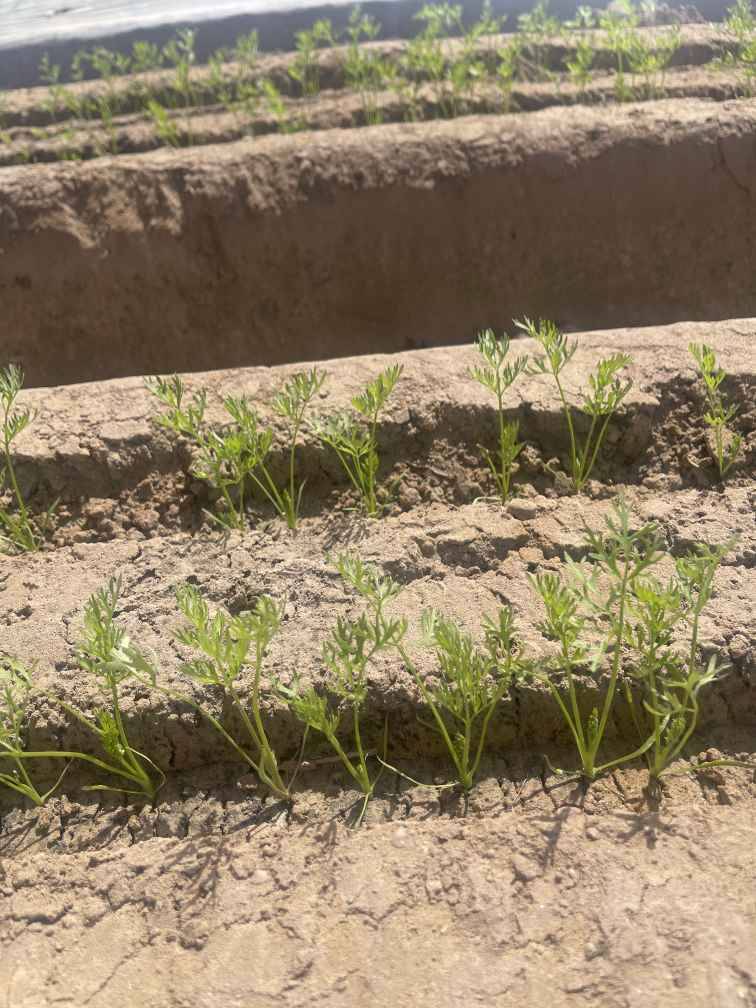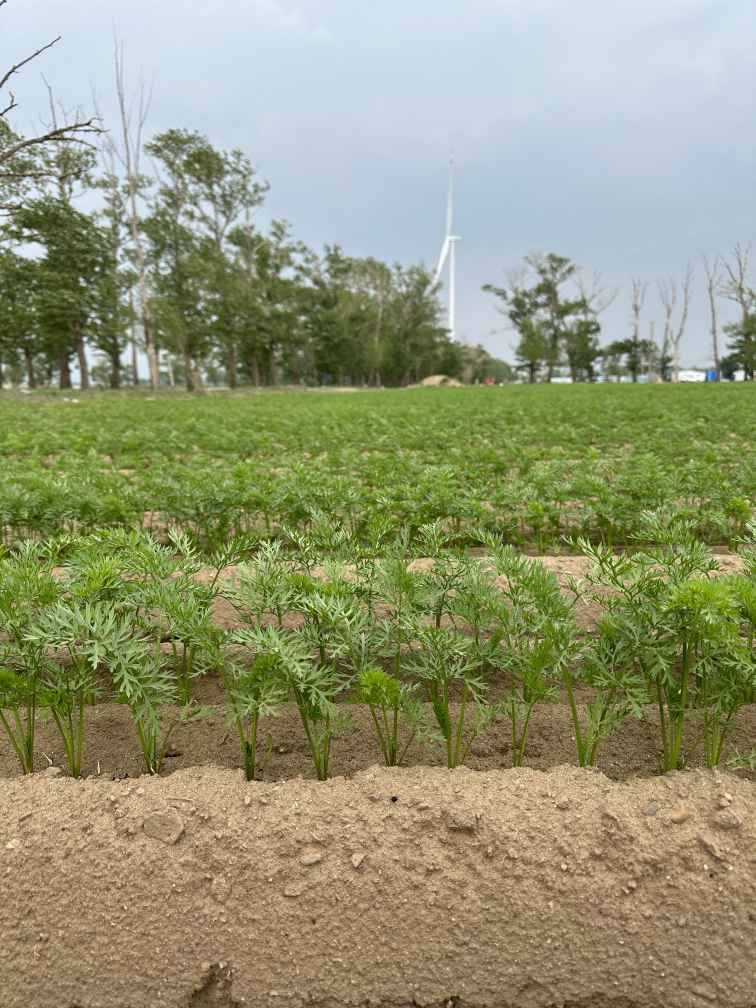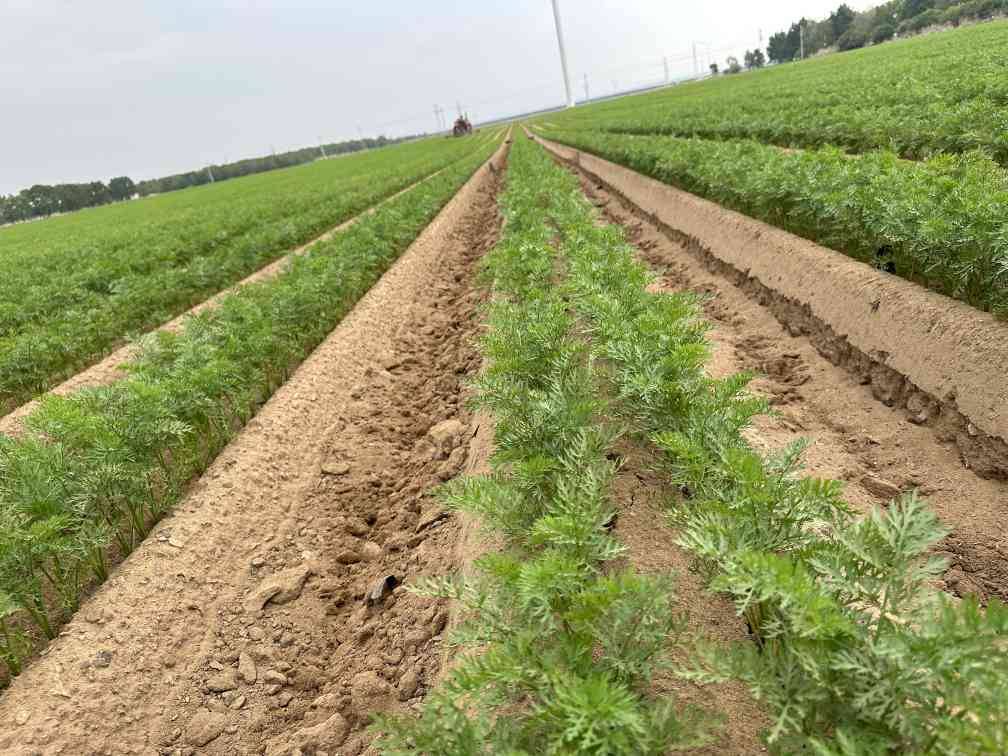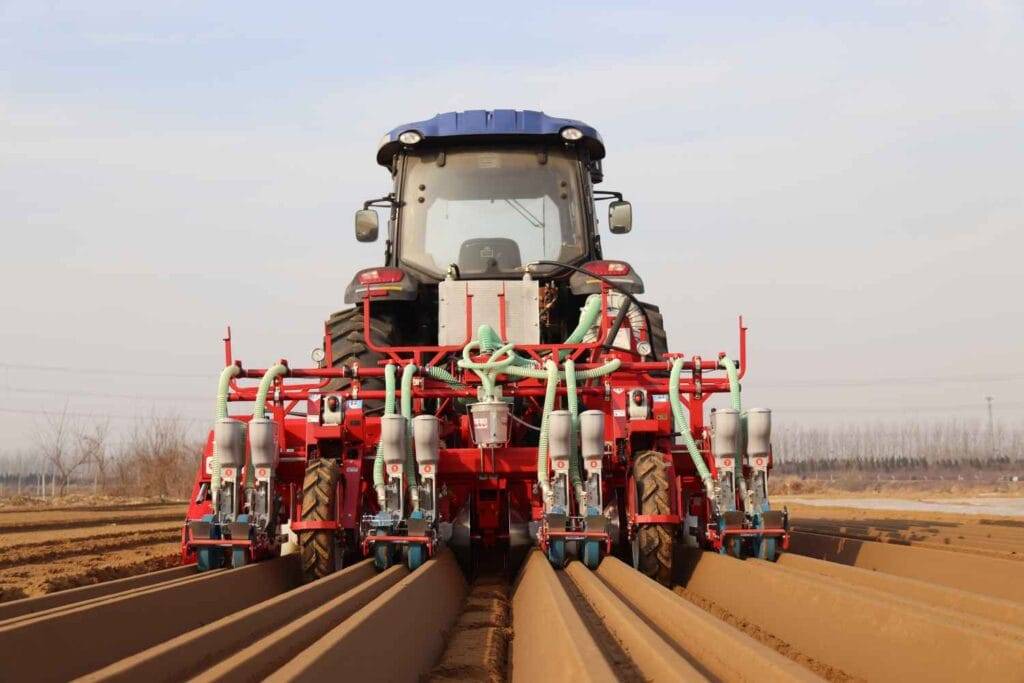Carrot (Daucus carota L.) is a globally cultivated root vegetable, rich in carotene, vitamins, and dietary fiber. It has a large market demand and considerable economic benefits. Traditional manual sowing is inefficient, with uneven sowing and low seed utilization. With the improvement of modern agricultural mechanization, air suction vegetable seeders are playing an increasingly important role in carrot cultivation. This article will introduce in detail how to utilize air suction seeders to complete an efficient and scientific carrot cultivation process, from seed treatment to field management.

- Preparations before planting carrots
- Seed selection and treatment
Carrot seeds are tiny, with a thousand-seed weight of only about 1 gram. The seed coat is hard and germination is slow. In order to improve the seedling emergence rate, the following treatments are usually required:
• Selecting high-quality varieties: Choose varieties that are suitable for the local climate, such as early, medium, or late maturing types.
• Seed disinfection: Soak the seeds in warm water (around 50°C) for 30 minutes, or mix them with a solution to prevent diseases. - Soil preparation
Carrots prefer deep, loose, well-drained sandy loam soil. The tillage depth should be more than 25 centimeters to avoid soil compaction. Apply sufficient base fertilizer (decomposed organic fertilizer, phosphorus and potassium fertilizer), and create ridges and furrows to facilitate root penetration.

- II. Principle and Advantages of Air-suction Seeder
- Operating principle
The air suction seeder utilizes the principle of vacuum negative pressure to adsorb individual seeds through suction holes and release them at a set position, achieving precise single-seed sowing. - Advantages
• Even sowing: Avoid overcrowding or oversparing of seeds, which is beneficial for later growth.
• Depth controllable: consistent sowing depth, uniform seedling emergence.
• Seed saving and cost reduction: It saves 20% to 30% of seeds compared to manual and ordinary machine sowing.
• High efficiency: Fast sowing speed for large areas, suitable for large-scale planting.

- III. Sowing operation steps
- Machine and tool debugging
Adjust the diameter of the suction hole to match the size of the carrot seeds.
• Calibrate the sowing depth (generally 0.8~1.2 cm).
• Adjust the row spacing (commonly 20~30 cm). - Actual sowing
• Seed loading: Load the germinated carrot seeds into the seed box of the seeder.
• Machine sowing: Start the air suction seeder and maintain a steady forward speed.
• Soil covering and pressing: After sowing, promptly cover with fine soil and gently press down to ensure the seeds make close contact with the soil. - Precautions
• Avoid overly wet soil to prevent seeds from adhering to the suction holes.
• Maintain a stable vacuum level during sowing to avoid missing or double sowing.

- IV. Management during the seedling emergence period
- Keep the soil moist
Carrot seedlings have difficulty emerging from the soil, so it is necessary to ensure that the topsoil remains moist. Watering frequently with small amounts of water can help. - Seedling management
• Thinning: After emergence, thin the seedlings twice, ensuring a final spacing of 5-8 cm between plants.
• Replanting: If there are missing seedlings, they can be manually replanted. - Pest and disease control
Common diseases include damping-off and black rot, which can be treated by root irrigation with carbendazim; pests include aphids and cutworms, which can be controlled by spraying low-toxicity pesticides.
V. Field management in the middle and later stages - Cultivation and weeding
The roots of carrots are sensitive to compaction, so it is necessary to cultivate and loosen the soil in a timely manner to maintain soil porosity and aeration. - Topdressing
• During the seedling stage, thin nitrogen fertilizer can be applied topically to promote leaf growth.
During the root enlargement stage, potassium fertilizer is primarily used to ensure neat root shape and bright color. - Water regulation
Carrots are sensitive to both drought and waterlogging, and should be grown in a way that allows them to “see dryness and wetness”. Too much moisture can lead to root cracking, while too little can result in thin roots.
VI. Harvesting and Storage - Harvest time
According to the variety and sowing date, it can be harvested about 120 days after sowing. When the root diameter reaches 23 cm and the color is bright, it can be put on the market. - Harvesting method
• Large-scale planting can be harvested mechanically;
• For small areas, plants can be harvested manually to avoid breaking the main roots. - Storage
• Can be refrigerated under conditions of 0~2℃ and humidity of 90%~95%;
• It can also be stored in a cellar or sandy soil.
VII. Future Prospects of Air-suction Seeder in Carrot Production
The air suction seeder not only enhances the precision and efficiency of carrot seeding but also lays the foundation for large-scale and standardized planting. With the development of smart agriculture, the future will witness:
• Precision carrot seeder, ensuring more accurate row spacing and plant spacing;
• Real-time monitoring system, which detects seeding quality in real-time to avoid missed seeding;
• Combined with unmanned agricultural machinery, it can achieve fully unmanned operation throughout the entire process.
This will greatly promote the modernized planting level of small-grain vegetables such as carrots.
summary
From seed to harvest, the successful cultivation of carrots relies on scientific management and efficient sowing methods. Air suction carrot seeders greatly enhance production efficiency through precision sowing, seed conservation, and guaranteed seedling emergence rate. For farmers, mastering key aspects such as pre-sowing preparation, equipment adjustment, and field management can improve both the yield and quality of carrots, achieving considerable economic benefits.

